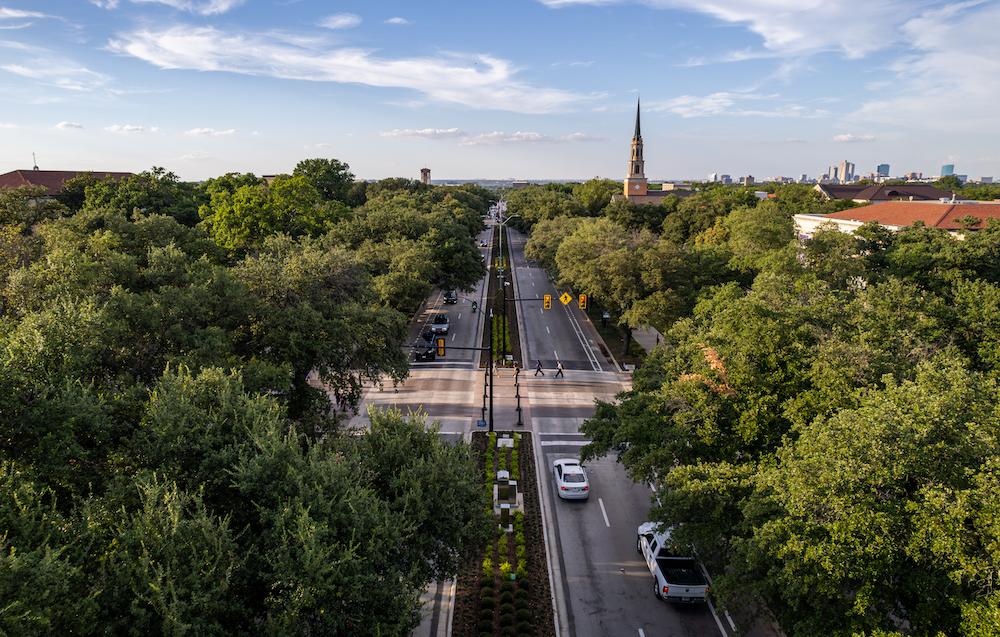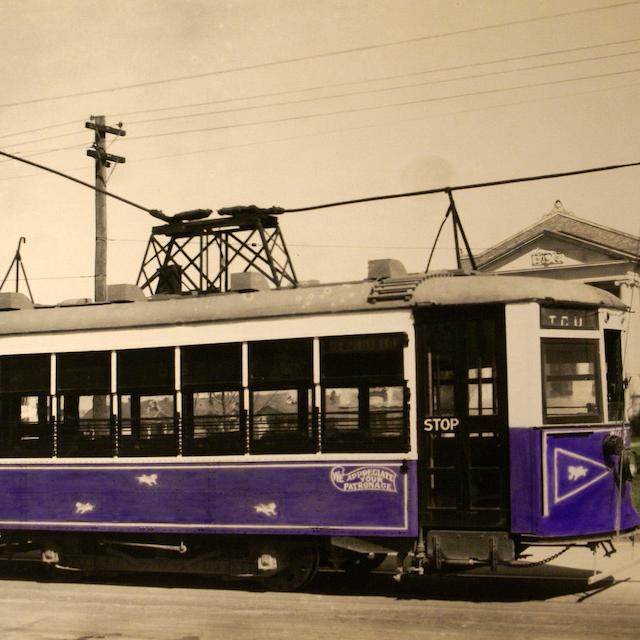University Drive is and always has been woven into the fabric of Fort Worth and the TCU campus. But long before this thoroughfare became one of the city’s north-south vehicular connectors, getting to and from campus was primarily via trolley.
In their heyday – relatively short in transit history books – electrified trolleys or streetcars (vs. horse- or mule-drawn) were the popular way to travel. They helped to connect neighborhoods to central business districts, ran on a schedule and were relatively inexpensive to ride.
Fort Worth, as it were, had one of the most extensive streetcar systems, according to Quentin McGown, a local historian who has presented many lectures at TCU.
“There were about 40 miles of streetcar lines in the city at their peak, with connections to Dallas, Cleburne and Sherman,” he said.
The streetcar that ran to TCU started in the fall of 1911.
Following the fire in 1910 that led to TCU seeking to relocate from its current home in Waco, every major city in Texas courted the college to come to their city. Trustees then knew that the future of the university depended on having a streetcar system to get students to campus, so all proposals had to guarantee that there be “…ample grounds, water and sewerage facilities, fire protection, and streetcar connections to the campus.”
Fort Worth was selected, thanks to the contract for TCU to receive a 50-acre tract, plus the promised utilities and streetcar line. The TCU line, which was an extension of the Forest Park line that originated near downtown, stopped in the Mistletoe neighborhood and necessitated building a bridge at Park Hill Drive, according to McGown. The line ended in front of the TCU administration building and “was about as far as you could go to the southwest corner of Fort Worth.”
Streetcars brought students and staff to what, at the time, was nothing but bald prairie and a few campus buildings. Thanks to the streetcar, the area around the university would become some of the first Fort Worth residential suburbs.
“The goal was to get people from central city – downtown – to the suburbs,” McGown said. “There’d been some moderate expansion of Fort Worth at that time, but a lot of the growth happened after World War I.”
Conversely, the streetcars also gave dormitory-living students a means to go beyond campus. They could hop on a streetcar headed downtown to shop, work or attend church, a movie or other social functions.
As years went on, the streetcar eventually met its demise as automobiles became more affordable in the 1920s and 1930s, and buses were seen as more economical and flexible. The last streetcar quit operating in Fort Worth in 1938. As the lines were closed, the rail was pulled, and the tracks paved over.
Today, a recently completed improvement of University Drive through campus has made for safer vehicle and pedestrian traffic with wider walkways, enhanced traffic patterns and signals, and more protected crosswalks.
“As enrollment has grown, it became increasingly important to enhance pedestrian safety crossing and along University Drive through the heart of TCU’s walkable campus,” said Todd Waldvogel, associate vice chancellor for facilities and campus planning. “This corridor remains a critical link between our expanding university and our prosperous hometown of Fort Worth.”

